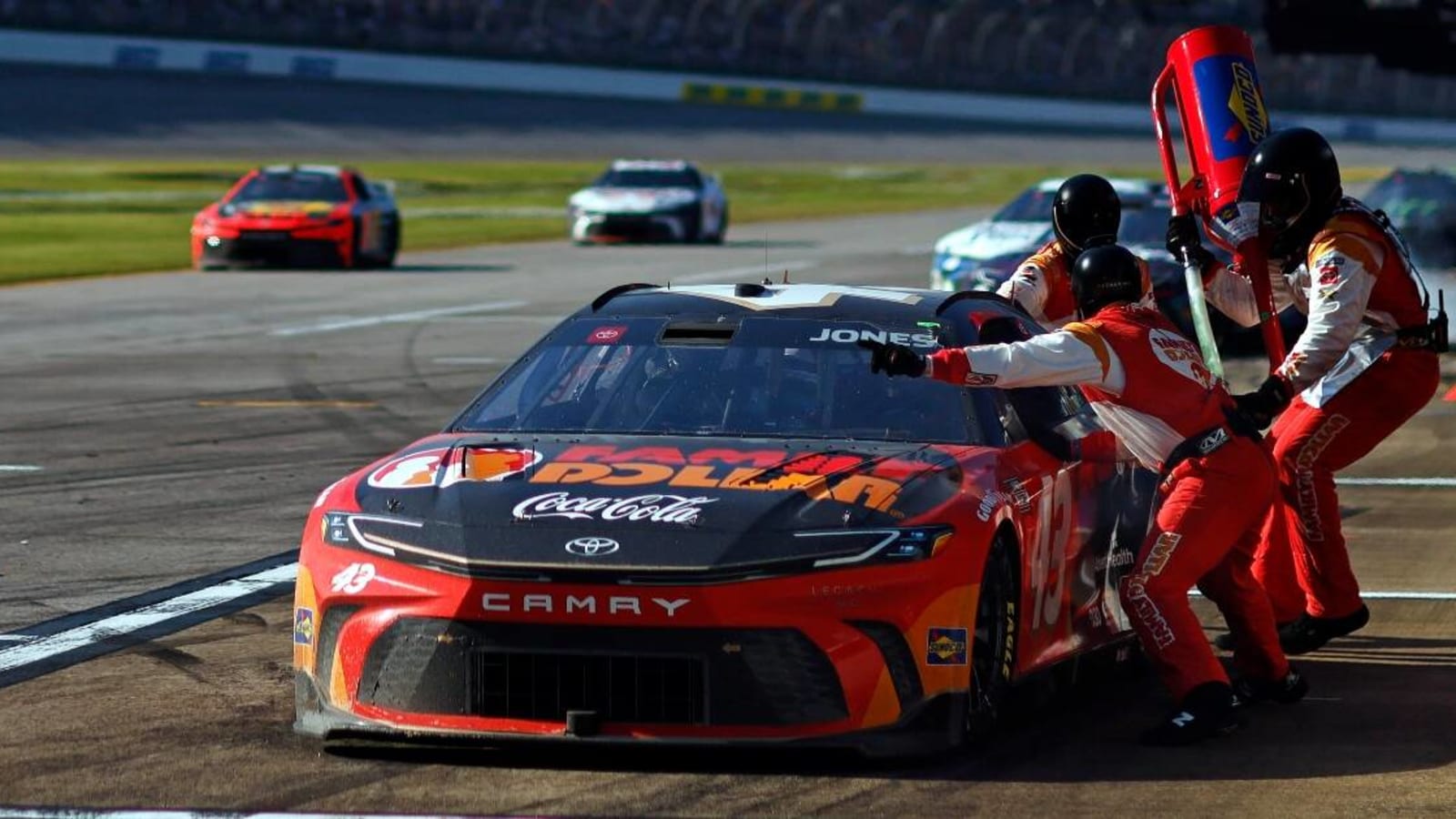
During his career, Kevin Harvick has been involved in and has also witnessed a lot of wrecks. The Erik Jones wreck stands out. Particularly, the fact that the NASCAR Gen 7 car is stiffer and has led to harsher wrecks at times.
Driving the car for the first two years it was released, Harvick learned a lot about it. The thing is, NASCAR has made the car more crushable and actually improved the safety of the Gen 7. Still, there are things about the car that at best are different and at worst could be a flaw.
On his Happy Hour podcast, The Closer talked about Erik Jones’ wreck and why it was so violent for him. These comments were prior to Jones announcing his spinal fracture.
“The Josh Berry incident, the Corey LaJoie incident – those cars when they get up in the air like that and slam back into the ground, it feels like someone takes a punch and hammers it right through your spine,” Harvick said. “It is violent. Erik Jones’ hit was violent, it blew the air cleaner off, blew the hood off. I think that he was definitely over 160 miles an hour I would say, if not more when he hit the fence like that, and those right angles and hits like that are just really tough. With this Gen 7 car, they are just much more violent.”
We have seen injuries in this car before. Concussions were a large concern with rear-end impact. However, NASCAR made adjustments to improve the outcomes of those impacts.
Why Erik Jones’ wreck was ‘more violent’
Kevin Harvick isn’t just a driver, he knows a thing or two about the race cars themselves. He’s a student of the sport and always has been. While talking about the Erik Jones wreck, Harvick offered more insight on exactly why the impacts are more violent.
It has to do with how the car absorbs the energy of the crash. In older cars, the “snap” of the wreck, so to speak, took a little bit longer. We’re talking fractions of a second, but it matters. The Next Gen car absorbs it quickly without as much give on the car itself, so the impacts are more intense.
“What happens with these cars, the old car had a ramp-up process that is pretty flat, right? So from a second standpoint, you go from here, to the end of the wreck, the slope of the impact is absorbed by the car like this,” Harvick said with his arm angled. “This car is absorbed like this,” he continued making a more severe angle. “So basically when you hit something now it happens so fast, so lie in a whiplash situation it happens a lot faster because a lot of that impact is going through your body because the whip is whipped faster, I guess is one way to explain it. It just becomes much more violent for the driver and that Erik Jones shot was, that was big.”
Erik Jones is out this week at Dover due to a compression fracture in his lower back. There is no timeline for his return, but in the meantime, Corey Heim is going to be driving the No. 43 car. Heim signed on as Legacy Motor Club’s reserve driver in the offseason and now he’s going to be put to the test.
More must-reads:
- Week 12 NASCAR power rankings: Kyle Larson distances himself with historic win
- Reporter provides clarity on controversial NASCAR finish at Kansas
- The 'Leading scorers from the 1992-93 NBA season' quiz
Breaking News
Customize Your Newsletter
 +
+
Get the latest news and rumors, customized to your favorite sports and teams. Emailed daily. Always free!

